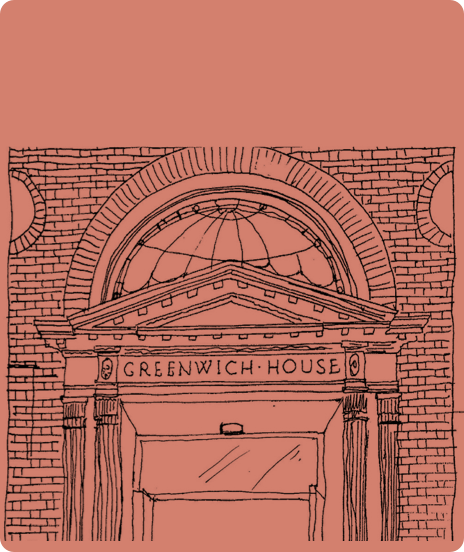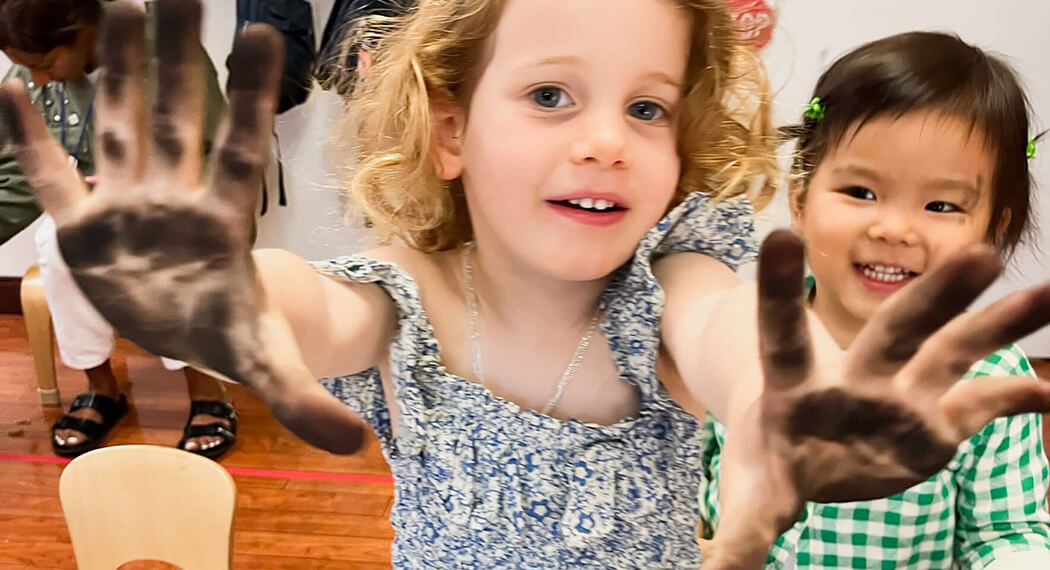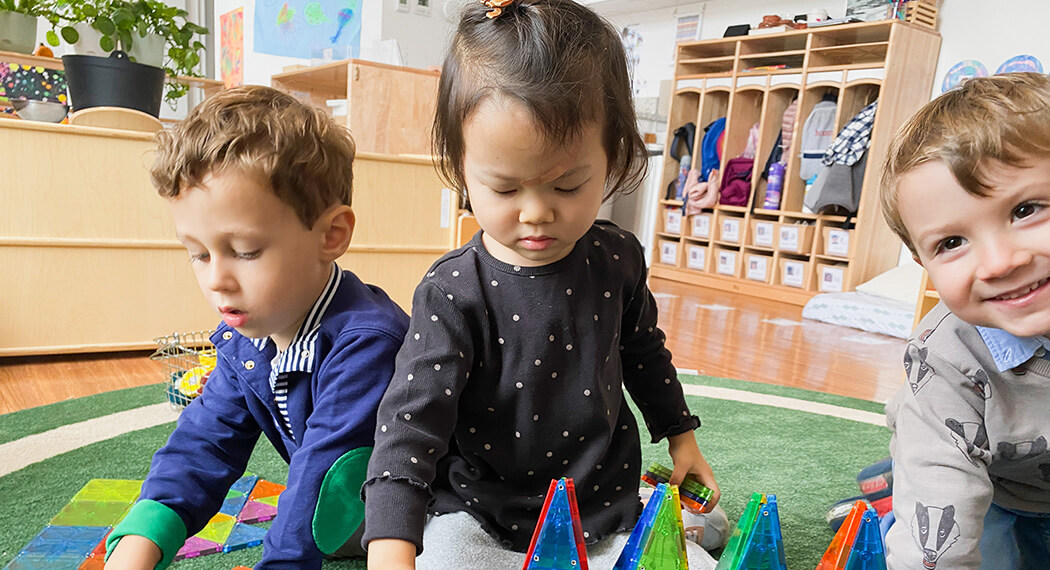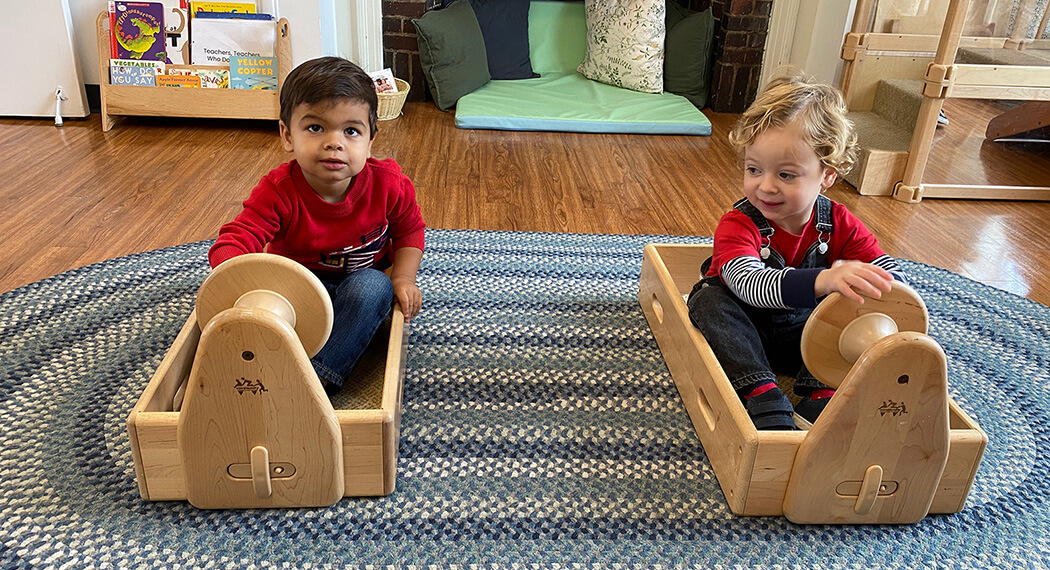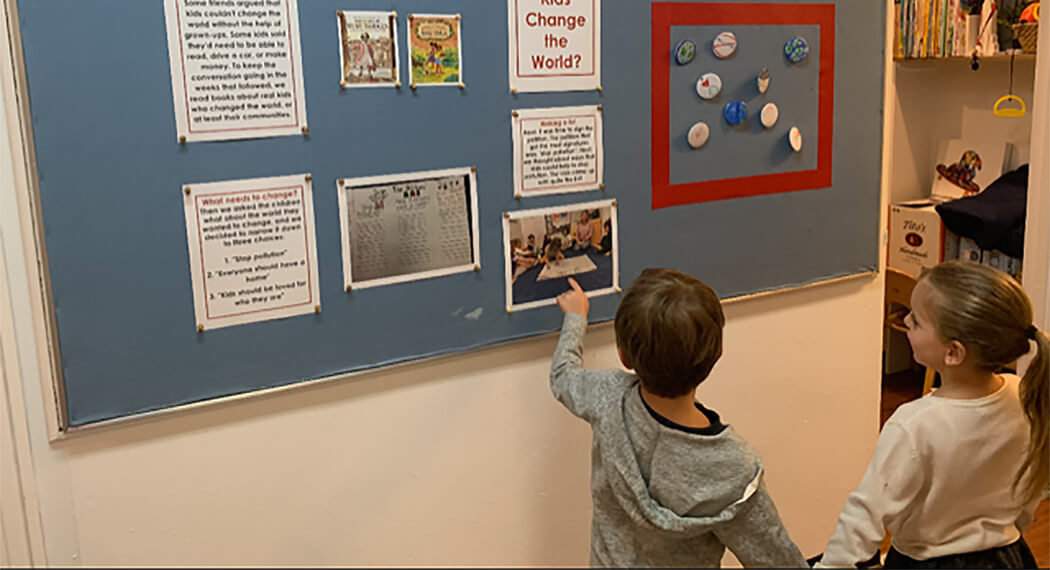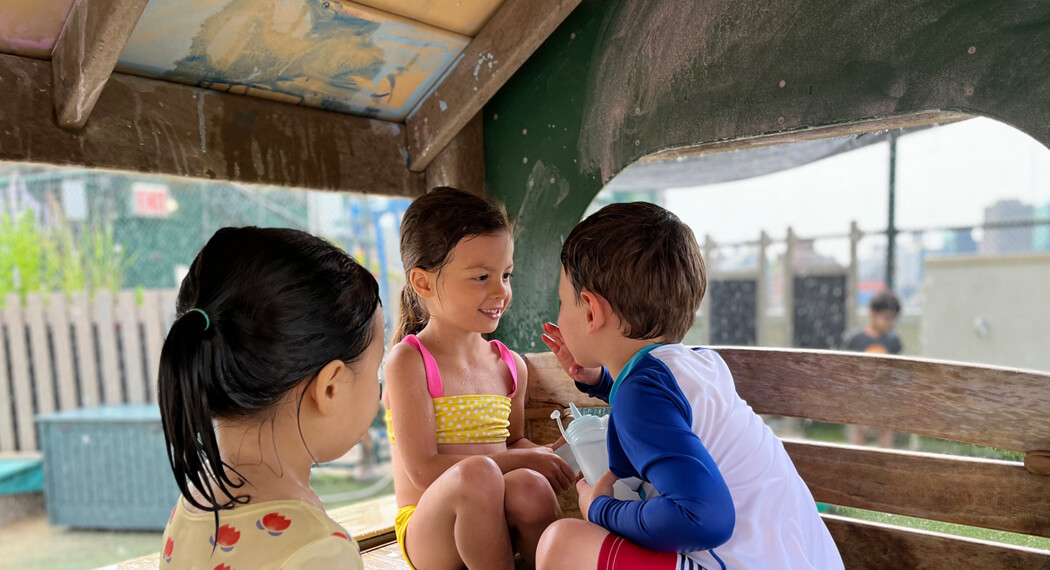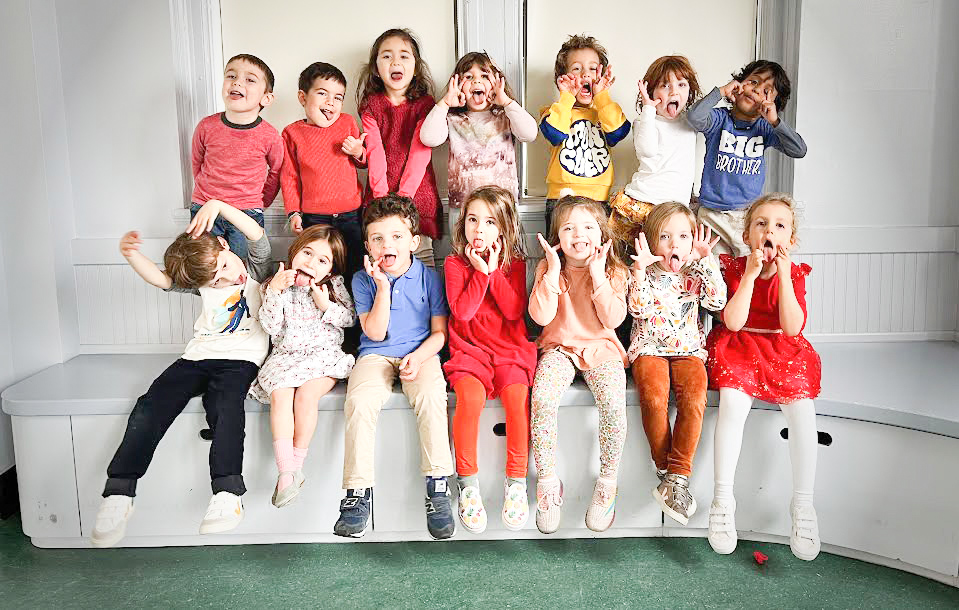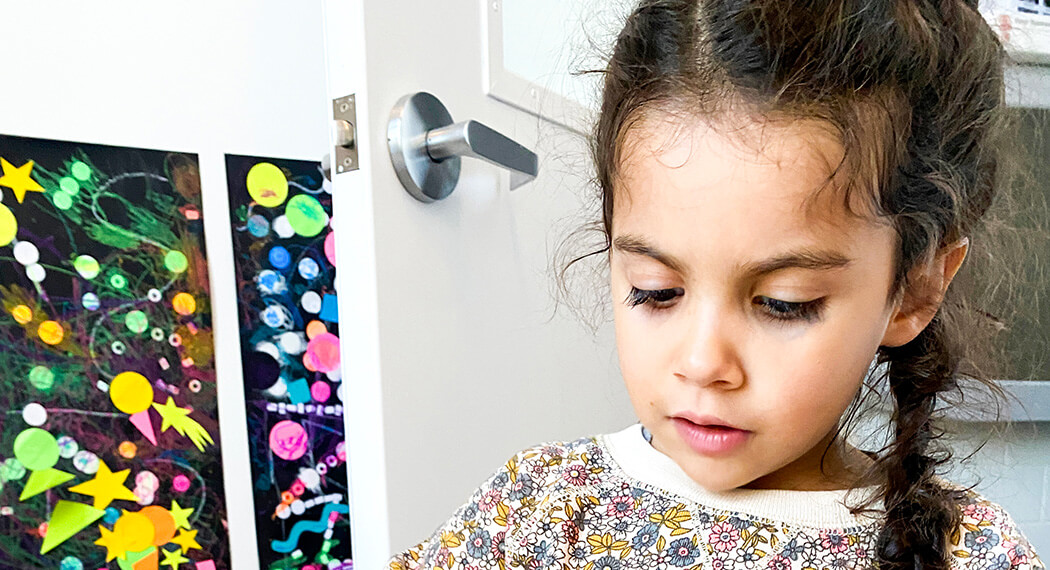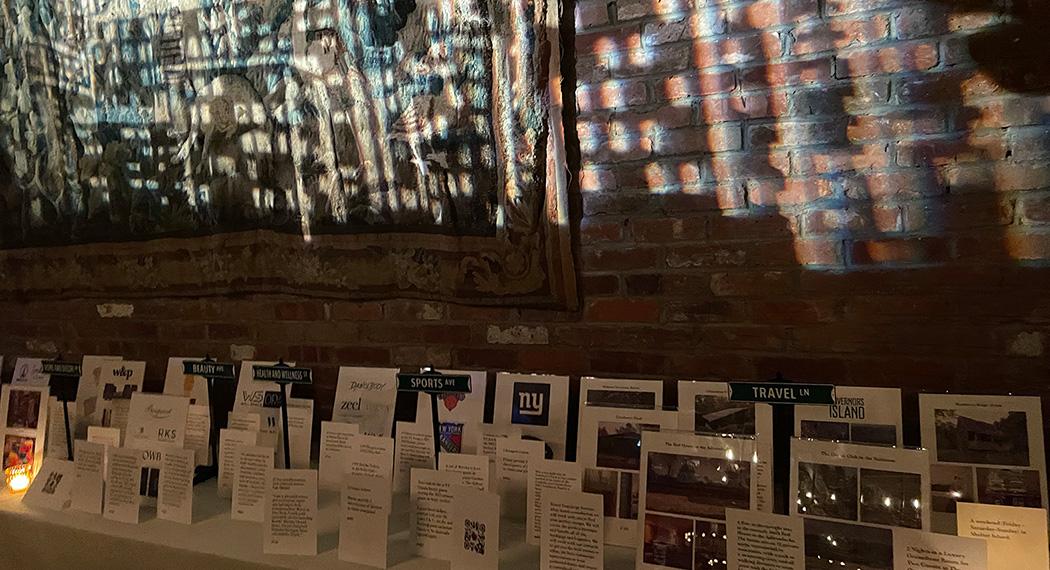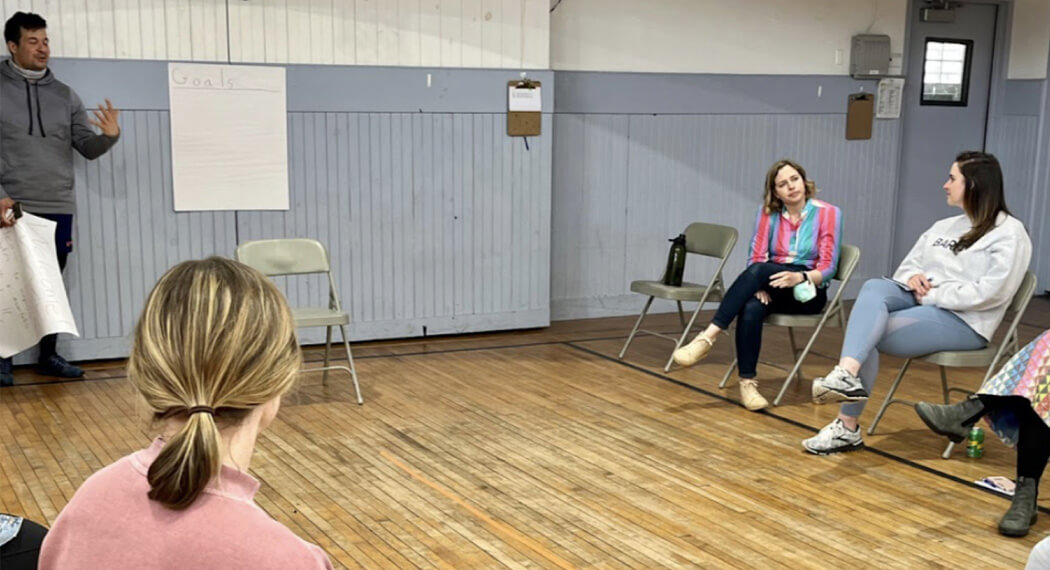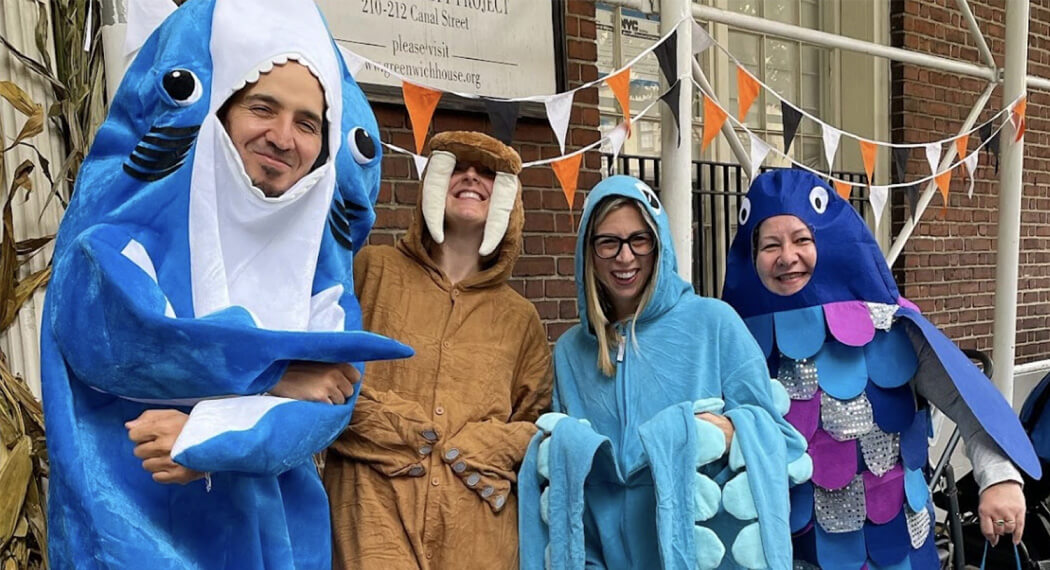In the beginning of the school year, we had two books on our bookshelf that featured the moon: A Big Mooncake for Little Star by Grace Lin and Shy Willow by Cat Min.
The class was quickly fascinated by these two books, and returned to them over and over again. We had rich group discussions while reading the books as a class.
“Is Willow in the bird body?”
“Maybe he’s giving him a ride. Maybe he’s taking him to the moon.”
“I think he might fall down.”
“He made a balloon!”
“Was that the letter?”
“Why is there no words?”
“But does it [the moon] talk?”
“No, it’s so quiet. Some people give cards to the moon.”
“Maybe Willow’s mommy and daddy are bunnies.”
“Willow went back to her mailbox.”
We decided to build on this interest and start exploring a moon curriculum. We began by having a conversation – What do we know about the moon?
“Purple moon.”
“Blue moon.”
“Red moon.”
“Yellow moon.”
“What if it’s a green moon for the green room?”
“Where is the moon?”
“In the sky.”
“No, in outer space.”
“When it’s morning time, it goes way up and pops into outer space.”
“What does the moon do when it’s morning time?”
“It goes to sleep.”
“They take turns.”
“What takes turns?”
“The moon and the sun.”
“Some of the planets when goes in the rocket ship and melts.”
“When does the pink moon go away?”
“The pink moon is in the morning.”
“How does it go back to earth?
“I have a book about the blue moon. I read it with my dad.”
We were thinking a lot about the color of the moon, the location of the moon, and what happens when the moon is not visible.
We introduced more books about the moon: Rabbit Moon by Jean Kim and Moon Pops by Heena Baek.
“Paper airplanes. Going to space.”
“What’s a journey for?”
“Something like where you live.”
“Where is the rabbit?”
“On the moon.”
“Touching the star.”
“Cape Cod.”
“I know why, because there’s a lot of people. That’s why [there are no more stars].”
“They’re making more stars.”
“Fixed the star.”
“More stars!”
“How come the stars came back?”
“The rabbit made the stars!”
“Binoculars.”
“Stethoscope.”
“You could put one eye on.”
“With binoculars, you put to your eyes.”
“I never see the moon because it’s when I’m asleep.”
“I see the moon in the morning sometimes.”
“I have a book about the blue moon and my dad reads it to me.”
“I have a book about the planets.”
“It’s dripping.”
“Why?”
“Because it’s too hot.”
“What is she doing with the bucket?”
“Fill it up.”
“Make it into moon pops.”
“A balloon.”
“Why is it melting?”
“It’s all dark.”
“Let’s see whats going on.”
“What do you think moon pops taste like?”
“Ice cream.”
“Banana.”
“Where did the moon pops come from?”
“From the mooncake.”
“From the moon.”
“The flower got bigger into the moon?”
Since then, we’ve also…
* Projected videos of the moon on the wall
* Received pictures and drawings of the moon from home (home-school connections)
* Created moon drawing prompts, including the light table and white art tools on black paper
* Set out a moon phases puzzle
At the moment, our focus is on the shape and color of the moon. In future weeks, we’re looking forward to exploring the texture/surface, purpose, and location of the moon.
Come check out our moon wall the next time you pick up or drop off!

